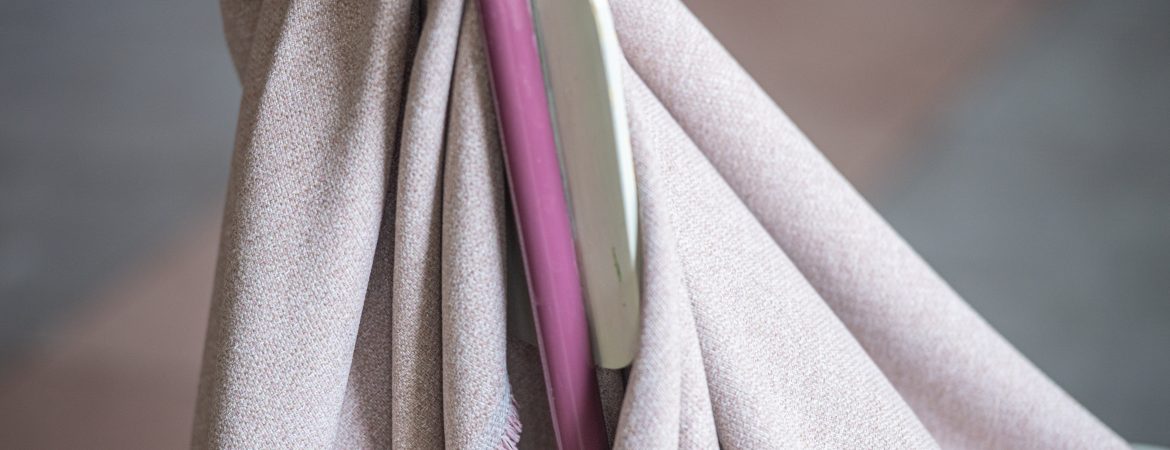
Impact savings in the textile industry
Sustainable textile production contributes to impact savings in the textile industry.
Use of sustainable upholstery fabrics
Sustainable textile production starts by choosing responsibly produced and recycled materials. This includes the use of organic cotton, hemp, linen, bamboo, lyocell, recycled polyester, recycled nylon and other sustainable fibres. By choosing a more sustainable alternative to the primary raw material, you reduce the environmental impact of textile production, reduce the use of chemicals, water and energy, and reduce CO2-eq emissions.
Sustainable production processes
Sustainable textile production also includes reducing the environmental impact of the production process. This is achieved by minimising the use of water and chemicals, recycling waste water, improving the efficiency of machinery and processes, using renewable energy during the process and reducing greenhouse gas emissions.
Fair and sustainable working conditions
Truly sustainable textile production not only looks at the ecological impact but also takes into account the working conditions of textile workers. Maintaining fair and sustainable working conditions includes ensuring decent wages, safe and healthy working conditions, and protecting workers’ rights.
Circularity
Managing the life cycle of textile products can contribute to impact savings in the textile industry. This includes encouraging the reuse, repair and recycling of textile products, reducing waste and reducing the need for new textile production.
Certification and transparency
Certifications and supply chain transparency help promote sustainable textile production and ensure sustainable and fair working conditions. This includes the use of environmental certifications, such as a GRS certificate and OEKO-Tex Standard 100, as well as transparency about the production chain of textile products and working conditions in the factories.
These spearheads contribute to a more sustainable textile industry and can significantly reduce environmental impact. It is important to note, however, that sustainable textile production is a complex issue and there is no ‘one size fits all’ solution. It requires cooperation between producers, suppliers, retailers, consumers and government agencies to promote sustainable and impact-reducing production.
FABRAA spearheads for impact savings in the textile industry
Sustainability covers a lot of things. FABRAA has therefore identified a number of focal points, based on which we determine the impact savings of our sustainable upholstery fabrics. The savings are shown as a percentage of impact compared to a traditional upholstery fabric. What we are focusing on:
Less energy & less water: by making products from recycled materials, the amount of water and energy required is greatly reduced.
Reduced CO2-eq emissions: the production of traditional fabrics leads to high CO2 emissions, which is harmful to the environment and to the people working and living near the factories. By using recycled materials, CO2 emissions during production are significantly reduced because fresh production/extraction of primary (often fossil) raw materials is avoided.
Workers’ rights: we consider the conditions under which our products are made and the working conditions for people in our supply chains to be incredibly important. For instance, we recently joined the BSCI in order to make sustainable improvements. BSCI stands for Business Social Compliance Initiative, a set of guidelines developed by the Foreign Trade Association (FTA) to help companies ensure that their suppliers and business partners comply with ethical standards in the workplace. The BSCI is based on the International Labour Organisation’s (ILO) core labour standards and covers areas such as working conditions, child labour, forced labour and freedom of association.
Companies that join the BSCI commit to applying the initiative’s guidelines in their supply chain, including monitoring and auditing their suppliers to ensure compliance. In this way, companies can improve their social and environmental performance and demonstrate their commitment to ethical business practices.
Through the aforementioned spearheads, we seek to boost impact savings in the textile industry.